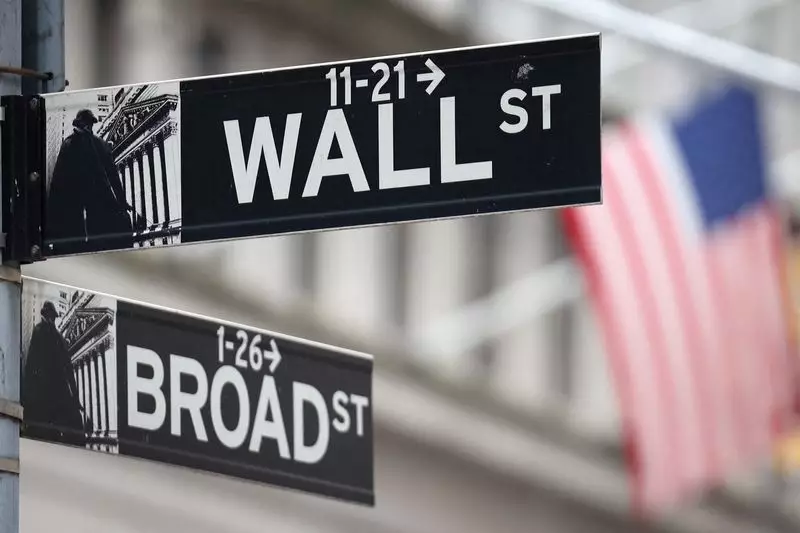In a week characterized by fluctuating investor sentiment, the Dow Jones Industrial Average managed to eke out a modest gain on Thursday, extending its streak of daily increases to five sessions. This uptick occurred despite a backdrop of light trading volumes and increasing U.S. Treasury yields that undercut the performance of prominent technology giants. In contrast, both the Nasdaq Composite and the S&P 500 saw slight declines, marking the end of their respective runs—four consecutive up sessions for the Nasdaq and three for the S&P.
The performance of major indexes reflects the inherent complexity of the current market dynamics. Many investors appeared to have taken a cautious stance, particularly with rising Treasury yields prompting a wave of concern over impending costs of borrowing for growth-oriented stocks. This financial environment has significant implications, especially for large-cap tech companies which have, until now, dominated the market narrative.
On the day in question, traders were closely monitoring U.S. government bond yields, particularly the 10-year Treasury note, which reached a high of 4.64%, its peak since early May. Growing yields traditionally pose challenges for growth stocks, as they increase the costs associated with financing expansion and innovation initiatives. However, a successful auction of seven-year notes mid-afternoon provided a momentary respite, causing the 10-year yield to temper down to 4.58% by the end of the trading session.
This interplay between government bond yields and stock performance illustrates the crucial balancing act investors must perform. With the tech-heavy Nasdaq struggling in the wake of these economic indicators, such fluctuations can have widespread ramifications across the entire market. Notably, investors are increasingly attuned to the substantial influence that a select few technology companies—the so-called ‘Magnificent Seven’—have on overall market performance.
Performance of Major Indices
When dissecting the closing numbers, the S&P 500 dipped marginally by 2.45 points, or 0.04%, concluding the day at 6,037.59. Similarly, the Nasdaq Composite lost 10.77 points, equating to a 0.05% decrease, ending at 20,020.36. Conversely, the Dow Jones Industrial Average rose by 28.77 points, or 0.07%, closing at an impressive 43,325.80.
The movements within the ‘Magnificent Seven’—the elite group of tech stocks such as Apple and Tesla—were telling of market trends. Tesla emerged as the biggest decliner, falling by 1.8%, while Apple managed to increase its stock value by 0.3%, edging closer to the unprecedented milestone of a $4 trillion market capitalization. This juxtaposition highlights the vulnerabilities that can emerge when a few large entities dominate market indices.
Despite a recent resurgence in tech stock performance since the November elections, concerns linger regarding the sustainability of this trend. The last few weeks have hinted at potential weaknesses, with analysts suggesting that for indexes to continue rising, other sectors must begin contributing to broader market gains. Adam Turnquist of LPL Financial pointed out that while the Magnificent Seven have been instrumental in driving market success, a scarcity of contributions from other sectors may be stymieing overall growth momentum.
Further complicating the outlook for investors, data released on Thursday indicated that new jobless claims had diminished to their lowest levels in a month, reflecting a labor market that, while cooling, remains fundamentally sound. This essential economic fabric underpins a phase known as the “Santa Claus rally,” historically seen in the final weeks of the year, essentially driven by holiday shopping and year-end financial maneuvers.
As we approach the year’s end and consider the historical gains seen during this festive trading period, it’s essential to navigate the market with prudence. The S&P 500 has averaged gains of approximately 1.3% during the last five days of December and the first two days of January since 1969, according to the Stock Trader’s Almanac. However, with bearish sentiments emerging in the wake of rising yields and a narrow leadership from tech stocks, investors should remain alert.
The declines in cryptocurrency-related stocks, prompted by a 3.9% drop in Bitcoin, also serve as a reminder of the volatility pervading certain sectors. With traditional spaces like consumer discretionary and energy indexes slipping slightly, it becomes evident that challenges exist on multiple fronts. Discerning market dynamics in this environment is necessary for formulating informed investment strategies moving forward.

